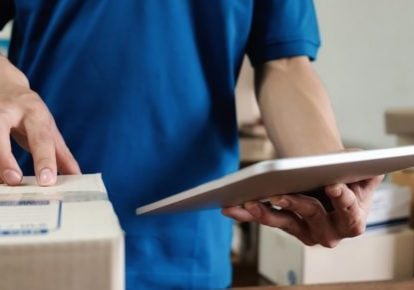
The cost of transporting, accepting, restocking, or disposing of e-commerce returns to third-party sellers has always been a predictable loss factor, but the emerging industry of Reverse Logistics is paving a better path for dealing with e-commerce returns. And some new, disruptive players in this space are offering an even more appealing way to manage the process.
What is Reverse Logistics?
Reverse logistics is the process of moving goods from the end-user back to a seller or manufacturer’s control.
It applies to product returns from both e-commerce and physical stores. The science of reverse logistics helps a seller figure out the best way to resell or dispose of the product by analyzing data and automatically calculating the relative costs of disposing, warehousing, refurbishing, or selling to a liquidator. Depending on factors like seasonal demand and storage space, a seller can tell whether it’s best to restock for next year, re-sell, or dispose of the product.
Industrial real estate firm CBRE periodically studies this “circular economy.” Amid last year’s soaring holiday season, CBRE’s research estimated that the return rate for e-commerce sales is 15 to 30% higher than for physical stores. The National Retail Federation (NRF) estimates that every year, more than $400 billion of products get returned to online sellers.
There’s also increasing consumer demand for free returns, and that the return process be a simple one. E-commerce stores that want to remain competitive have little choice but to get with the program. And of course, easy returns mean more returns are likely to happen.
The bad news for the planet is that so many returns end up in landfills. And, the packaging and transportation of these goods are also big contributors to retail’s carbon footprint. But good old American innovation is coming to the rescue.
Two new disrupters have emerged.
And they’re associated with the two best-known logistics companies: UPS and FedEx.
Optoro is one of the disrupters advancing reverse logistics science even further. Backed by the logistics expertise of UPS, Optoro claims to eliminate much of the waste created in the reverse supply chain., which is estimated to be about five billion pounds in the U.S. It provides seamless ways for retailers to route each returned item to its “next best home.”
It provides a simple-to-use app that’s personalized and allows a user to configure how they want to handle the return. You can opt to re-sell through your own selected outlet channels, or through secondary marketplaces. Optoro also gives you access to its proprietary D2C and B2B channels. If you drop-ship, you can sell it again at retail through your primary store.
Optoro wrangles all the data from your reverse supply chain to give you visibility into where products are in the return process, which ones are available for resale, and where they can be sent next to recapture the most value.
Turning returns into bulk shipments
Not to be outdone by its competitor, FedEx has now partnered with reverse logistics service provider Happy Returns. The partnership looks to improve return experiences for buyers while reducing both costs and carbon footprints for e-commerce sellers. Happy Returns already offered reverse logistics services to retailers both online and in-store. Now, though, it’s installed “Return Bars” at more than 2,000 FedEx Office stores nationwide, including the 340 Walmart stores with FedEx locations inside. Even if the item didn’t come to the customer via FedEx, if it was sold by a participating retailer it can still be brought into the Return Bar for shipping back to the seller’s designated warehouse or preferred “ReCommerce” outlet.
Happy Returns also has more than 500 existing locations in its network to process returned products. These include freestanding stores, malls, campus bookstores, and office complexes.
Shoppers can start their returns either on the retailers’ websites, or at HappyReturns.com. Then they receive a QR code. They show the QR code at a FedEx Office store — no shipping box required, just the original packaging. Refunds and exchanges can be processed on the spot, as well.
FedEx, in turn, aggregates all these box-free items from multiple merchants into a single shipment. The shared shipping expense reduces costs for retailers while eliminating a lot of cardboard waste.
And then, of course, there’s our favorite 400-pound gorilla: Amazon.
In a class by itself, the “world’s largest store” has its own fleets of vehicles and drivers who can handle both the reverse logistics and the forward ones, to anywhere and from anywhere. It already had its ubiquitous Amazon Lockers at malls, 7-11 stores and other community-based locations. Then last year it began a partnership with Kohl’s department stores for accepting un-boxed Amazon returns.
The company continues to develop more physical footprints to ease returns for consumers. These may include customer return counters at the new fulfillment warehouses it intends to locate at vacated JC Penney mall anchor stores, now bankrupt but with plenty of community-centered big-box space available. Read more here about how e-commerce is “eating” the old retail world.
It’s a comfort to know that even as the pressure mounts from consumers demanding better return experiences, innovative new ideas can rise up and meet the challenge — while preserving more profits for e-merchants.




